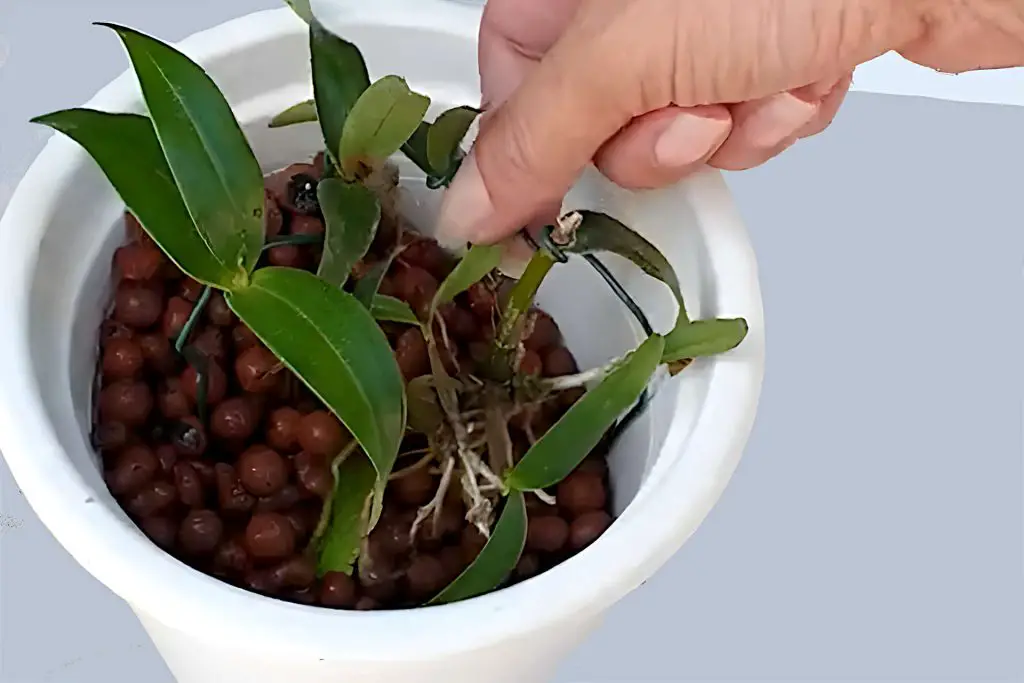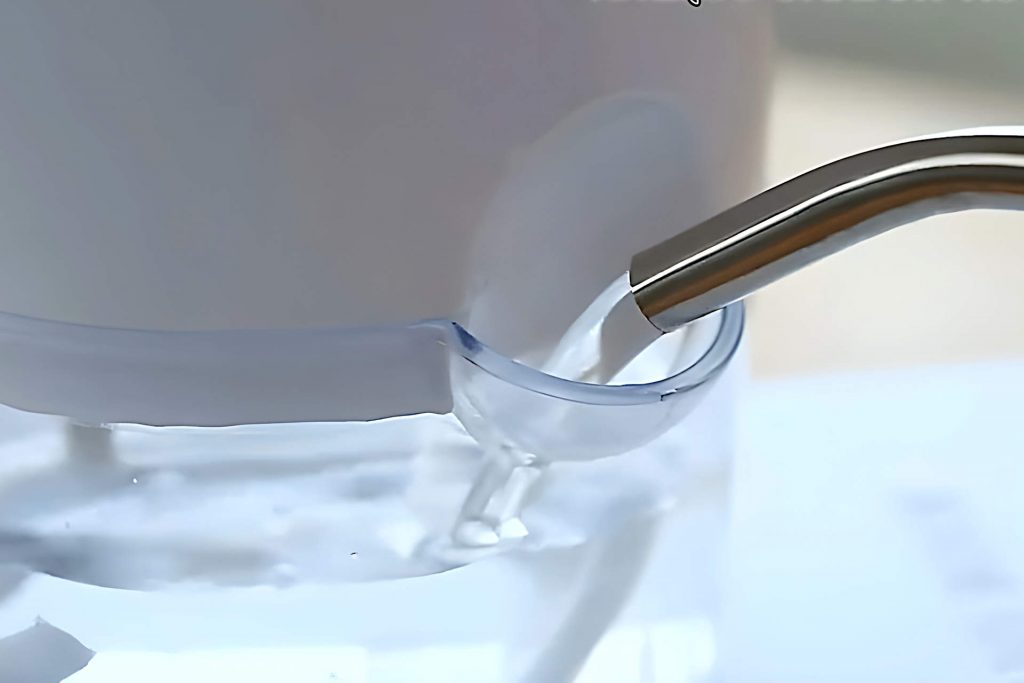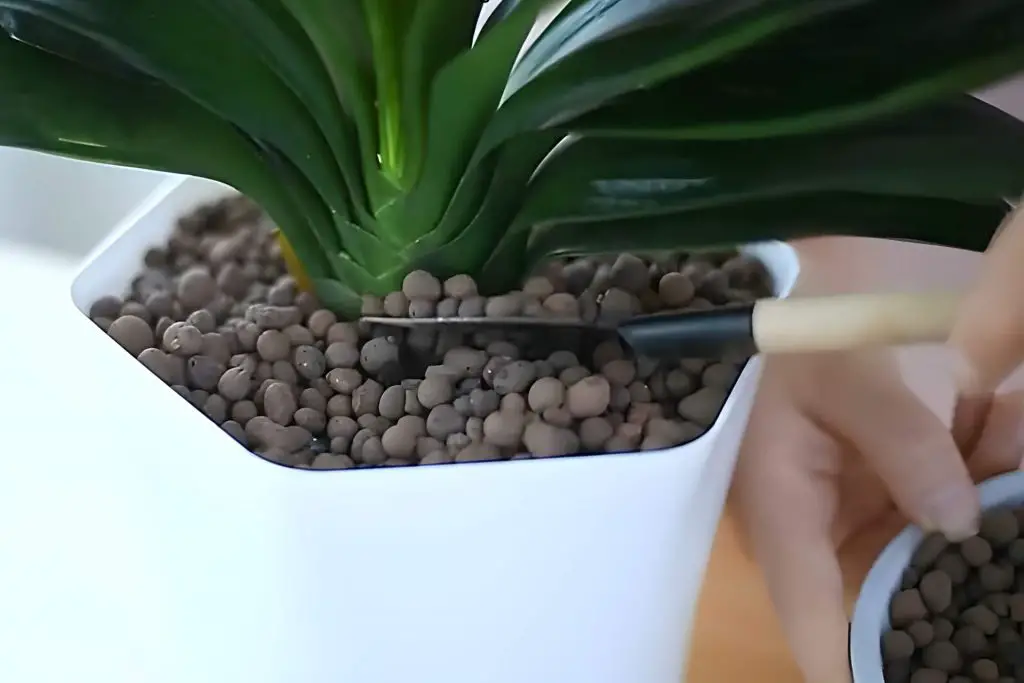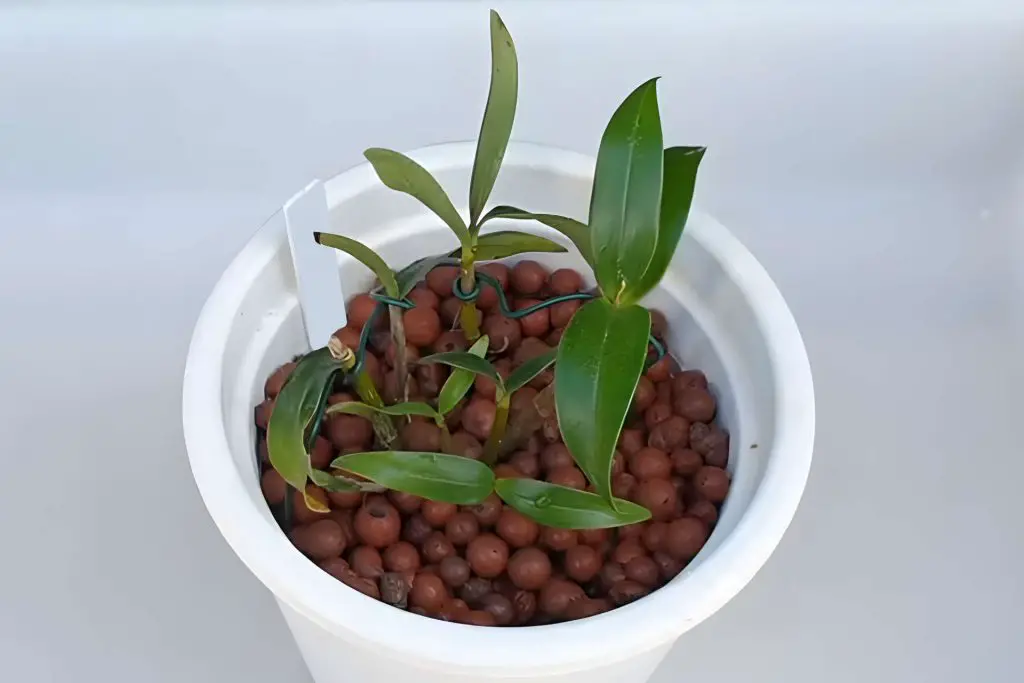How to Use LECA Balls: Growing Plants in LECA
LECA are small round clay balls or pebbles and are sometimes referred to as hydroton balls. These balls have become a popular soil alternative or substrate for potted and containerized plants and can be used in a variety of different ways making them very flexible.
Their popularity has rapidly increased over the last twenty-five years in tandem with the rise of home hydroponics as a method of growing plants and vegetables. But LECA can be used as a companion to other growing mediums like soil, potting mix, and compost and is especially effective for indoor and containerized plants.
LECA Balls is a popular growing medium that is used for cultivating and propagating plants in semi-hydroponic systems as well as in combination with other growing mediums such as soil or potting mix.
LECA Balls as a Stand-Alone Growing Medium – Semi-Hydroponics
The most common way in which LECA balls are used is as a stand-alone growing medium for semi-hydroponics and aquaponics.
Semi-Hydroponics

LECA balls, when used as a stand-alone growing medium, just employ the use of the LECA, water, and nutrient feed. Unlike like regular hydroponic systems, there is no circulation of water, the water remains still and this is sometimes referred to as passive hydroponics or semi-hydroponics.
There are two different ways in which you can utilize LECA balls in passive hydroponics. These are the partially submerged nutrient stagnant method and the nutrient stagnant wick method. Both methods are equally effective in allowing plants to grow and thrive.
There are several advantages of using LECA as a stand-alone growing medium. In terms of growth, the plants are protected from over-watering because the LECA balls provide airflow around their roots through the gaps and structural nature of the balls.
Being an inorganic material they also prevent pests and pathogens from harming the plant. The tiny gaps between the balls will allow the roots to push through, yet structurally support the plant.
Not least, the whole process when using LECA as a stand-alone growing medium is clean and first free, bar a small amount of dust that may be created by friction between the clay balls. This would be washed away in the preparation process anyway.
However, on the downside, as LECA has no nutrient value on its own, you have to add nutrients to the water, regularly monitoring the parts per million (PPM) values, to ensure the plant continues to thrive.
Partially Submerged Nutrient Stagnant Method
By far the most common method is the partially submerged ‘nutrient stagnant method’. It is also possibly the easiest planting method of all the methods that you can use.
The best sizes of LECA balls to use are 0.3″ to 0.6″ (8-16mm). Having sourced these, the first thing you will have to do is prepare the balls for use. Depending on how you have bought your LECA balls or if you are reusing old LECA balls, this will usually involve washing and soaking them overnight.
Once the LECA has dried out it is time to ready the pot or container that you are going to use. Next you add the LECA balls to the pot, until around a third full. Then you would place your plant on top of this layer of balls before gently filling the remaining space around of the plant until the balls are level with the lip of the plot.
The next step is to add a solution of water and nutrients, the specific nutrients will be dependent upon the type of plant you have. You will add this solution until it is around a third of the way up from the bottom of the container.
The system relies on capillary action created by the LECA balls to draw water up to the roots. You have to be careful though as the capillary action will only provide so much of a pull before gravity takes effect.
Something that you need to watch out for is your container allowing easy access for your probe to measure the PPM and EC values of your nutrient solution. Whilst large jars can look cool, the straight sides make this difficult. Try to use a pot or container with the side sloping inwards to the center.
The second issue that can cause problems is the growth of algae. This can be a considerable pain to deal with and drastically diminishes the aesthetic effect that the LECA ball provides, particularly in a transparent container.
Nutrient Stagnant Wick Method

The second method is the wick method. This different from the partially submerged method in the way that the nutrient solution is delivered to the plant.
Unlike the partially submerged method, the wick method draws up the nutrient solution to the plant’s roots via a wick. This is usually a length of cloth or rope that is submerged into a separate reservoir below the pot containing the LECA balls and plant.
To use this method prepare your LECA balls. You will need two pots for this method with one pot stacked inside the second pot. When using ‘v-shaped’ pots this usually provides a natural reservoir in the bottom pot.
You will need a hole in the bottom of the inner pot through which your wick is threaded. Start adding the LECA balls, which sit on top of the wick, to about a quarter of the way up the container before placing the plant in. Then carefully pour in the rest of the LECA balls. Finally, add the nutrient solution to the bottom pot until it is just below where the bottom of the upper pot will sit.
In this configuration, the process works because the wick, protruding from the upper pot, sits in the reservoir of the nutrient solution, soaking and drawing up the moisture into the pot with the plant and LECA above. This moisture is further pulled up to the roots through the same capillary action that is at play in the partially submerged solution.
Using LECA as A Mulch

The simplest way of using LECA balls with soil is by using them as mulch. A mulch is simply a layer of organic material that is spread on the surface of the ground or in this case growing medium.
Mulching is typically done to conserve water, prevent the growth of weeds, and improve the quality of the soil around plants. In addition to these benefits, mulching can make your plants look more organized and tidy, and it can cut down on the amount of time spent on watering.
There are a number of reasons why you might want to employ LECA as a mulch for your plants, whether they are indoors or outdoors.
Using LECA as a mulch will assist the soil of potting mix in retaining its moisture, as a result of evaporation allowing water to permeate into the substrate. This minimizes the amount of water stress that the plants experience particularly in warm conditions and helps reduce the required watering frequency.
This is because adding a layer of LECA balls as mulch, acts as a thermal insulator, preventing excessive temperature swings in the plant’s root system. This can be particularly important if your pots or containers are outside, although it can be equally important indoors if the temperature of a room builds during the day when you are out.
Adding LECA as a mulch can also have a positive effect on a plant’s root structure. The LECA balls prevent any excess movement that you would get in the top layer of the soil or potting mix, which in turn fosters the formation of roots further up the tap root.
There are several subsidiary benefits in preventing external hazards affecting your plants too.
A LECA mulch can prevent weeds or undesired stray plant seeds from germinating in your pots. This is more likely to be an issue for pots and containers outside but can occasionally be a problem for indoor plants too.
Using LECA balls as a mulch will help prevent pests, such as fungus gnats and aphids, from attacking your plants, stopping gnats from burying their larvae in the soil or potting mix. This is particularly a problem for indoor plants.
In addition to the prevention of pests, as LECA is made from clay, and thus an inorganic material, it can also help inhibit the spread of pathogens and fungus from attacking the root system of the plants.
How to Apply LECA as A Mulch

Prepare the LECA balls so that they are ready for use and choose and ready the pots that you need for planting.
Fill the pot with your preferred growing medium, with soil or potting mix, leaving around 2-2¼” (5-6cm) of space at the top for you to add the LECA balls. Then pour the balls around 0.3″ to 0.6″ (8-16mm) size to the top of the pot, being careful not to damage the plant as you do so. Water the plant as necessary.
Using LECA as A Substrate
The second method of combining LECA with soil is to use the balls as a substrate. This reverses the mulch application in that the LECA balls sit underneath the soil.
There are two main benefits to planting this way. By adding the LECA as a substrate, you will improve both the drainage and airflow around the roots of the plant. This is because LECA is both porous, with a honeycomb internal structure, and slightly irregular in size and shape. Thus, when the balls are poured into the pot or container they leave tiny gaps.
The main advantage of this is that better drainage and aeration will feed oxygen into the root structure helping to promote stronger root growth. At the same time, the increased airflow prevents the chance of root rot through over-watering.
To some extent, it will also help with preventing the fungus gnats larvae from feeding on the roots and again, the risk of pathogens and fungus. However, it won’t insulate the soil or be as effective in preventing weed growth as if used as a mulch.
How to Apply LECA as A Substrate
After preparing the LECA balls by cleaning or washing and soaking them overnight you will choose and ready the pot that you are going to use.
To use LECA balls as a substrate you want to fill your pot to around 1¾” (4-5cm) deep with LECA balls, then add either your compost, soil, or potting mix on top. Ideally, you should use 0.3″ to 0.6″ (8-16mm) size LECA balls for the best results.
Now you would water your plant like you would water any other plant and allow the water to drain out from the bottom.
LECA Balls Used Outside in The Soil
In addition to being used as a growing medium for containerized growing either indoors or out, LECA balls can also be applied directly to the earth, although they do lose some of their benefits if employed in this fashion.
You can use them in a couple of different ways as a mulch, similar to the way you would use them as a mulch for potted plants, or mixed into the soil.
If using them as mulch, many of the same benefits that we listed above apply. However, in that, they don’t decompose as a normal mulch would and offer no nutrient benefits, other types of mulch might be better suited.
Another option is to mix the LECA balls directly into the soil. You would do this to help with drainage and water retention but it must be remembered that the balls themselves provide no nutrient value. There are probably better and less expensive ways of achieving the same goal by using sand, perlite, or mushroom compost.
Getting to Grips with Using LECA Balls: Growing Plants in LECA
It is clear that LECA balls are a very versatile growing medium that can be used as a stand-alone solution or be combined with other growing mediums such as soil and potting mix.
Generally, LECA balls are ideal for containerized plants. Although they can be used in soil on the ground, they lose a little of their effectiveness and there are often better solutions available.
